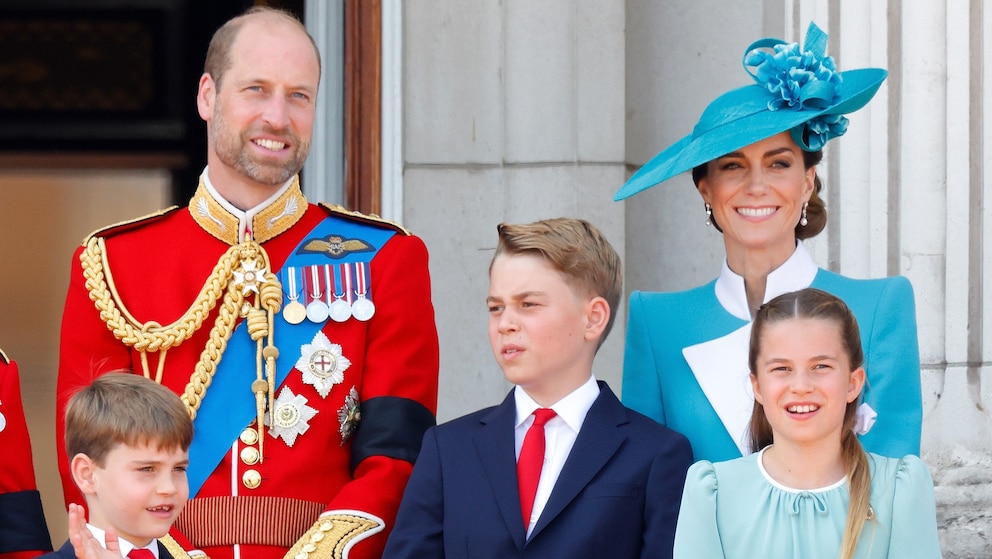It came quietly, through a palace communiqué that reached inboxes just after dawn.
A few carefully written lines changed the course of modern monarchy:
“His Majesty the King, in careful reflection and with the Crown’s long-term legacy in mind, has requested that the Princess of Wales begin preparing to assume a more prominent royal role, traditionally aligned with that of the Queen Consort.
Her Majesty Queen Camilla has graciously accepted and supported this transition.”

For a brief moment, there was silence. Then came the eruption.
The Freeze
Inside Buckingham Palace, staff described the moment as “a room holding its breath.”
Camilla, dignified but pale, stepped back from her usual place.
Catherine, graceful and composed, moved forward—her head bowed slightly, not in triumph, but in reverence to the weight of what was unfolding.
In that quiet pause, everyone sensed that something irreversible had changed.
“This wasn’t about duty,” one aide whispered later. “It was about destiny.”
The Twist
For years, Catherine has been the monarchy’s most reliable bridge—calm in crisis, adored by the public, and flawless in image.
Polls have long named her the most popular royal, even surpassing the late Queen Elizabeth II among younger generations.
And yet, despite her quiet strength, few anticipated this moment.
To symbolically replace a sitting Queen Consort is almost unheard of.
While Camilla’s acceptance appeared gracious and swift, insiders say weeks of private discussions preceded the announcement.
“This is not a demotion of Camilla,” one senior aide told reporters. “It’s a recognition that Catherine is now the public face of the monarchy’s future.”
The Collapse
Reactions beyond the palace gates were immediate—and intense.
On social media, hashtags like #QueenCatherine and #RoyalReset exploded within minutes.
Fans flooded timelines with collages of Catherine and Diana, side by side, waving with the same serene poise.
One viral comment captured the sentiment:
“Diana never got the chance. Catherine is completing her story.”
But not everyone was celebrating. Reports suggested that Meghan Markle’s circle was fuming over the symbolism.
Meanwhile, Camilla’s supporters expressed quiet sorrow, acknowledging her years of dedication and steadiness.
Even they, however, admitted the tide had turned.
“This isn’t just optics,” wrote one royal historian. “It’s a passing of the torch. The monarchy needs Catherine’s humanity more than Camilla’s resilience.”
The Aftermath
From this point forward, the transition will be gradual—but unmistakable.
Catherine is expected to begin representing the Crown in roles traditionally held by Camilla, from Commonwealth ceremonies to diplomatic receptions.
In the coming months, she may be granted the honorary title “Queen-in-Waiting,” though Buckingham Palace has yet to confirm it.
Prince William, visibly emotional, released a brief but heartfelt statement:
“Catherine has always led with grace and strength. This is a natural next step.”
For many, the moment carries echoes of Diana’s ghost. The world’s beloved “People’s Princess” never wore the crown she inspired.
Now, Catherine walks that same path—not haunted, but uplifted, embraced by a public that sees her as both successor and redeemer.
“Diana would be proud,” a royal biographer remarked softly.
The Meaning of Fate
What King Charles has done is more than a reshuffling of royal roles.
He has written a new chapter in monarchy—one that dares to bend tradition in order to endure.
For Catherine, the burden is immense—but so is the love she inspires.
For Camilla, the choice may sting, but her grace ensures her legacy as the Queen who stepped aside with dignity.
And for the people, this moment feels less like protocol and more like poetry.
The monarchy has found its symbol for the future.